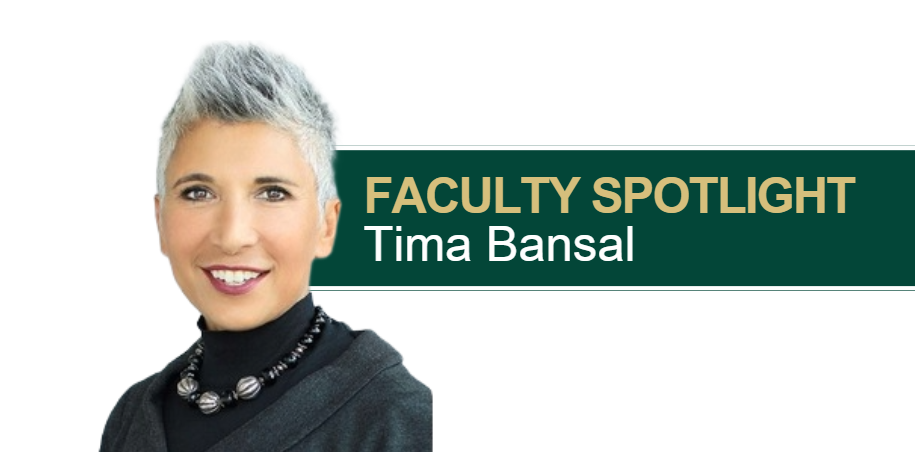
Subsidiary Shields: Yet another way multinationals have found to hide pollution
Join Tima as she tackles the topic of positioning and managing pollution-intensive activities in organizational hierarchies.
August 26, 2024
Professor Tima Bansal's recently published the paper, co-authored with Dr. Juyoung Lee, in the Strategic Management Journal, titled "Sweeping it under the rug: Positioning and managing pollution-intensive activities in organizational hierarchies".
Unavoidable Consequences
On December 3,1984, tragedy struck the people of Bhopal, India as more than 40 tons of methyl isocyanate gas leaked from a pesticide plant that was owned by the Indian subsidiary of the American firm Union Carbide Corporation, immediately killing at least 3,800 people and causing significant morbidity and premature death for tens of thousands more.
More recently, On April 20, 2010, the oil drilling rig Deepwater Horizon, in the Gulf of Mexico, exploded and sank, resulting in the death of 11 workers on the Deepwater Horizon and the largest spill of oil in the history of marine oil drilling operations. Four million barrels of oil flowed from the damaged Macondo well over an 87-day period, before it was finally capped on September 19, 2010.
Introduction
With a general body of work that encompasses sustainability, Professor Tima Bansal set out to ask how can organizations innovate to create more prosperous, resilient and sustainable systems? In her latest publication with co-author Juyoung Lee, titled “Sweeping it under the rug: Positioning and managing pollution-intensive activities in organizational hierarchies”, Drs Bansal and Lee present a new perspective on how parent companies strategically mitigate the risks related to pollution. They not only offshore pollution or outsource their pollution, they push it down in the corporate hierarchy to layers of corporate subsidiaries.
Prior Research
Previous research recognizes that multinational corporations may offload or outsource end-result pollution from their activities occurring directly or indirectly through their subsidiaries. Companies may transfer their waste to less affluent countries with less stringent environmental regulations, or contract third-party firms to manage their potentially environmentally hazardous waste. Taking a fresh approach, Drs Bansal and Lee analyzed how 67 of the largest US-headquartered chemical manufacturing companies use subsidiaries as a third approach to avoid managing strict environmental regulations and potential accountability for possible, problematic environmental footprints.
Risk and Responsibility
In their research, Drs Bansal and Lee acknowledged that often, large and prominent parent companies have a need to be shielded from external risk factors in general, related to activities by their subsidiaries. To achieve this, parent companies have an advantage of limited liability in that they may delegate pollution-intensive activities to legally independent subsidiaries, thereby distancing themselves from negative association, press and potential liability. The often-complicated entanglements of subsidiaries and entities in the chain can be difficult to unravel and legally navigate regarding who is ultimately held responsible, should accidents and disasters occur.
Passing The Buck
One might assume that strict environmental regulations could be a driving factor for businesses to offload environmental waste to their subsidiaries intending to mitigate responsibility. This seems a likely scenario and is supported by data. Professors Bansal and Lee noticed that subsidiaries located in states boasting rigorous sustainability standards did not necessarily reduce their pollution; they simply moved it further down the corporate hierarchy.
The question now is how does this impact the development, strategy and enforcement of future environmental regulations moving forward? Current regulations may not be enough to prevent a company from exacerbating their ecological footprint left behind by pollution-intensive activities. Often, this responsibility is further passed down in the corporate hierarchy, so that society does not pin the blame on the parent company. The pollution finally lands in an area that distances the parent company from any negative environmental impact and a potentially out-of-control train wreck of legal liability and the unavoidable blame-game that might ensue.
Final Thoughts
Bansal and Lee’s study sets in focus that government regulations which fail to consider new corporate structures may eventually result in indirectly enabling continued environmental harm rather than reducing it, and that it is therefore important to consider a firm’s organizational form to develop future environmental governance, regulations and oversight, to ultimately reduce negative environmental impact. Government regulations may need to be restructured in a way that keeps a connection of responsibility moving throughout the chain of subsidiaries all the way up the line to the parent company, to hopefully create a sense of responsibility and accountability, rather than an impenetrable shield from responsibility. Successful implementation of mindful, targeted regulations that consider these connections may potentially result in more positive outcomes for all parties involved, and ultimately set the stage for the prevention of negative impacts, and preservation of both environmental, individual and corporate well-being.